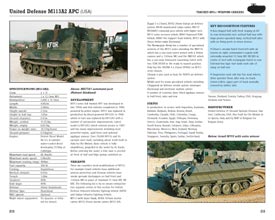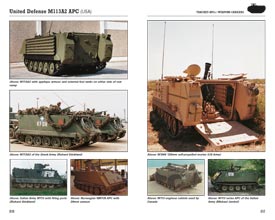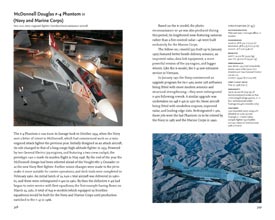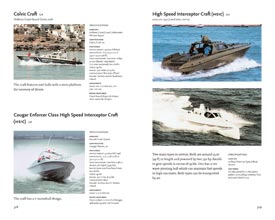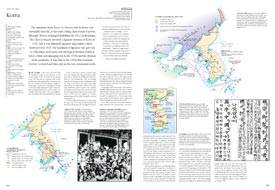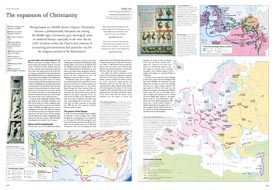Jane’s Recognition Guides series style

An extensive, long-term project, I started rebranding the Jane’s Recognition Guides series in 2004, collaborating with the editor and in-house design director to bring the previous, very dated, series style into the 21st century, book by book. Since that first (new) title, Jane’s Vintage Aircraft Recognition Guide, we have introduced eight new and updated titles in the rebranded series: Special Forces (a brand new title), US Military Aircraft, Warship, Aircraft, Airline (another new title), Space (a new title again) and Guns. During the project there has been a complete change to the Jane’s publishing team, but I have worked very successfully with the current editor and in-house designers to keep the branding constant while allowing for the differing design needs of each book.
From the start, several things had to be considered alongside the need to update the look of the series:
- The new series style had to be legible and look inviting regardless of the density of facts and figures required for every entry on every page.
- It had to be flexible enough to accommodate the different quantities of data and images from all of the existing Jane’s books, and any potential new titles.
- As far as possible the initial design had to be easily re-usable for each subsequent book in the series, so meticulous attention to master pages and paragraph and character stylesheets was vital from the outset.
- The design had to work faultlessly as a co-edition every time. That was non-negotiable.
- The series is supported by essential sales in the US market, so the US co-publisher had to be consulted regularly and their needs taken into account.
Once the new design was approved by everyone, new master documents and new text style sheets were created. The process of getting from existing files in the old design to the new edition in the new design required exporting the existing edition’s text in its entirety into a halfway-house blank document, and, because the application of stylesheets in the earlier files was inconsistent and couldn’t be re-used, stripping that text of all its formatting to ensure nothing of the old book’s layout sneaked through.
The text was then imported into the new design template, styled and then returned to editorial and the authors as some entries had to be substantially updated and corrected, some had to be removed, and new entries added, all without altering the page extent. Contents pages, introductions and indexes had to be updated and corrected, and images frequently had to be replaced with more recent photographs. Further changes were made with the American co-publishers in mind: in Guns, for example, imperial measurements (principally weight and length) had to be added alongside the existing metric measurements. This was a mammoth undertaking involving thousands of conversions and intensive proof-reading, not least because Jane’s readers are exceptionally eagle-eyed.
Providing print-ready PDFs for this series is a huge undertaking in its own right. With some titles reaching 496 pages, creating pre-separated PDFs (required by HarperCollins’ co-edition workflow for early titles in the series) led to files thousands of pages long. Each page of the layout generated five separate pages of PDF (one page per plate: cyan, magenta, yellow, black and the text black plate for translation), so a 496-page book becomes a 2,480-page PDF, every page checked and double-checked before it goes to the printer.
My composite or pre-separated print-ready PDFs are generic, created to suit nearly every printer worldwide, and are automatically included in any quotation unless specifically requested that they be excluded (may I mention that I usually undercut repro house prices considerably?).
The Times Complete History of the World
The first edition of this book was published in 1978 and by the time I worked on the substantial updates for the seventh edition in 2007, The Complete History hardback measured 362 x 262mm, had 416 pages, was printed in full colour throughout, came with a slipcase and retailed at £75. As it says proudly on the back cover, “Over 2 million copies sold. Translated into 18 languages”. The challenges were significant, as major updates were required throughout, especially to the newer history sections, as history just keeps on happening.
The book consists of many gigabytes of data and the updates were not only to text, timelines and page references in XPress, but also to the many images, maps and diagrams. Intricate work was required in XPress, Illustrator and Photoshop to pull all the different threads together, along with an extremely good editor-designer relationship that was able to survive long hours on the telephone discussing countless minute grammatical points and geo-political border changes amongst other things. The files have also required subsequent work to generate versions that will work for co-edition publishers still using legacy software: in the case of Illustrator files in particular, that demands great attention to detail as Illustrator’s text engine is constantly being updated, and file version changes very often cause text on paths to rewrap.





